iFi’s flagship DAC and headphone amplifier, the iFi micro iDSD Black Label, is the full-blown version of the nano iDSD Black Label that has more power output, more features, more outputs… and needs you to shell out more cash. It’s also larger, has a larger battery and allows you to hear a larger sound presentation (no jokes!).
Regarded as one of the best portable DAC/amps on the market, the iFi micro iDSD Black Label surely earned its fame, but it is not exempt from criticism in a couple design choices. It still sounds fantastic and really makes the investment worthwhile.
Disclaimer: this is a unit on loan from iFi. It was returned after the review had been published. You can learn more on the product on iFi’s website.
TL;DR: recap
| Pros |
Cons |
| iFi design (yes, that’s a pro!)
Superb build quality, high-grade materials, solid aluminium Useful and smart effects Low output impedance |
One-second silence gap when it starts playing
Sleep mode makes headphones and powered monitors pop |
Rating: 9/10
Packaging & Accessories
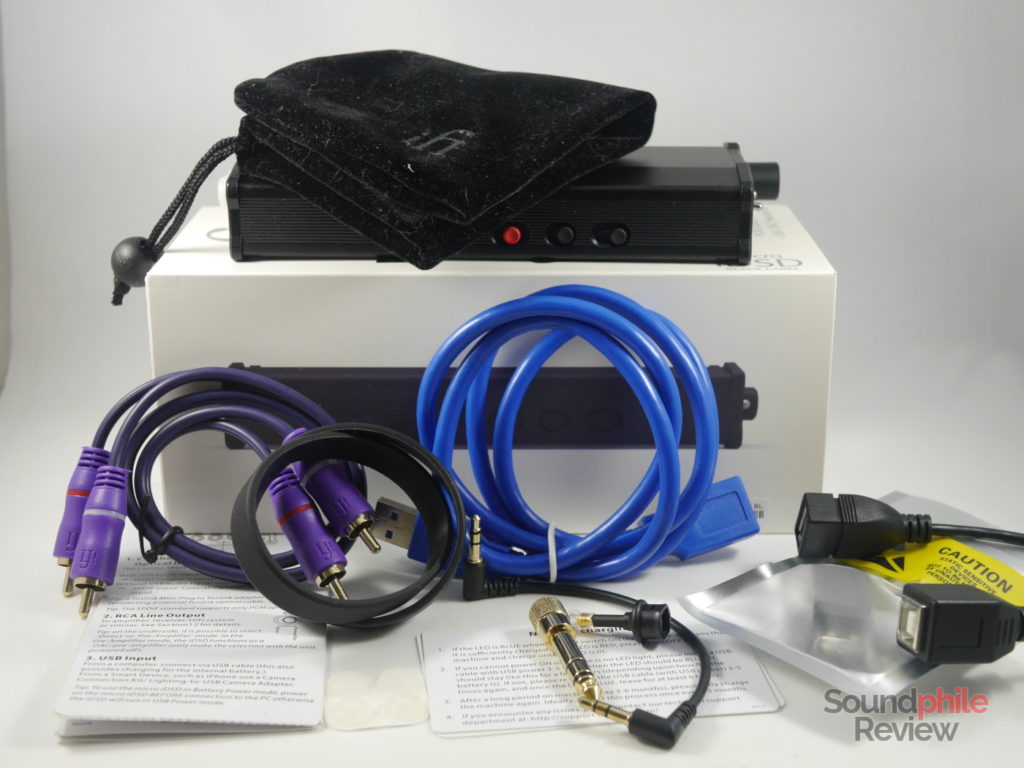
As in iFi’s best tradition, the box comes full of accessories: there are a tissue bag, a USB 3 patch cable (one end is male, the other female), a smaller OTG-like cable with a USB-B port, a USB-A to USB-B converter, a 3.5 mm to 6.3 mm jack adapter, a cable with 3.5 mm jacks at both ends, a small slab of silicone, two rubber bands, four rubber feet and an optical adapter (from TOSLink to mini-TOSLink).
Design & Build
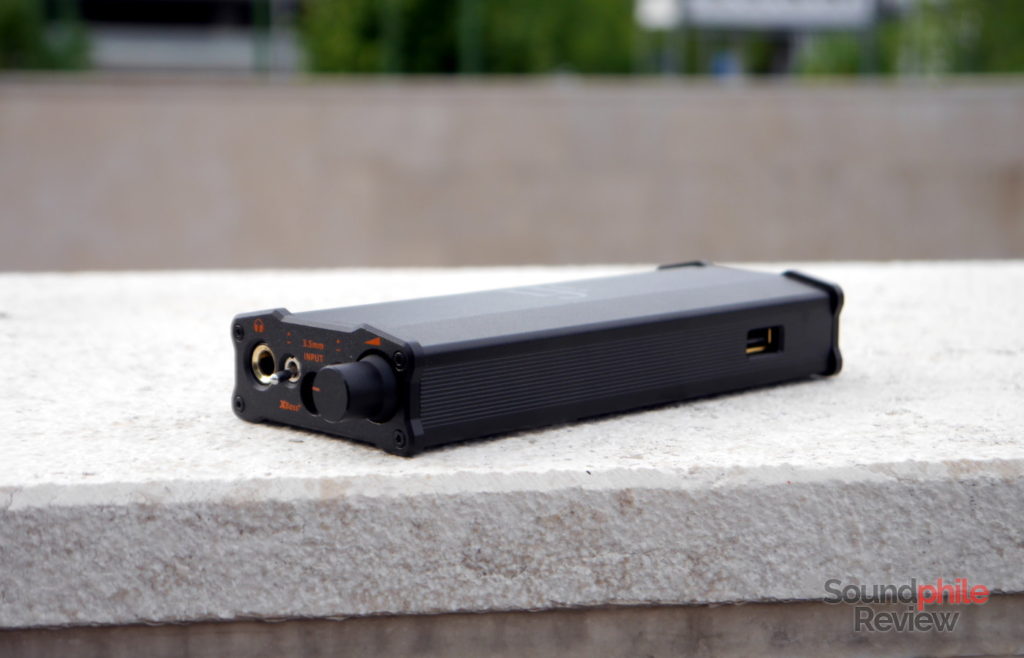
Being a part of the “micro” line, the iFi micro iDSD Black Label uses the same design as the other members of the family – that is, a rectangular aluminium body with a trapezoidal section. As it is a Black Label device, there is black paint applied to the metal body and accents are orange.
Assembly is as flawless as can be, with all parts being perfectly in place and fitting together. There’s no play between the pieces and this highlights iFi’s great attention to detail – something that’s to be expected, given their reputation and the price of this device.
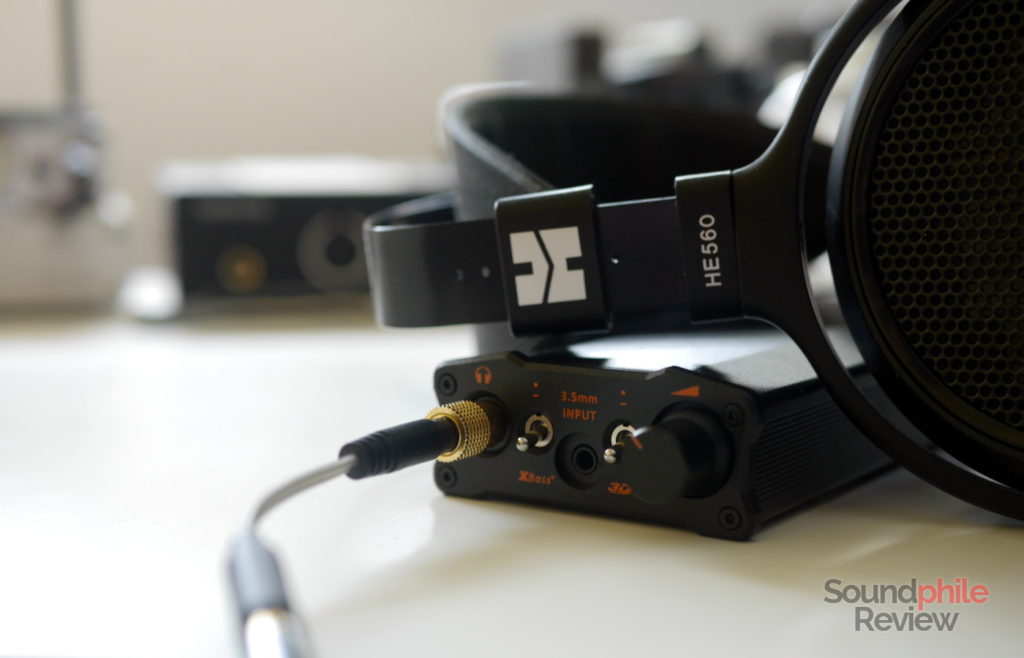
The front hosts the volume knob, the 6.3 mm jack output, the 3.5 mm jack input and the effects switches: one is for the XBass+, which gives bass a boost, the other is for the 3D+ that makes soundstage larger.
A slew of text is printed on the lower side, but it is black and is therefore difficult to read. iFi chose to highlight important text such as button labels printing them in orange and making them easily readable – as there are quite a few features, this is a really wise choice!
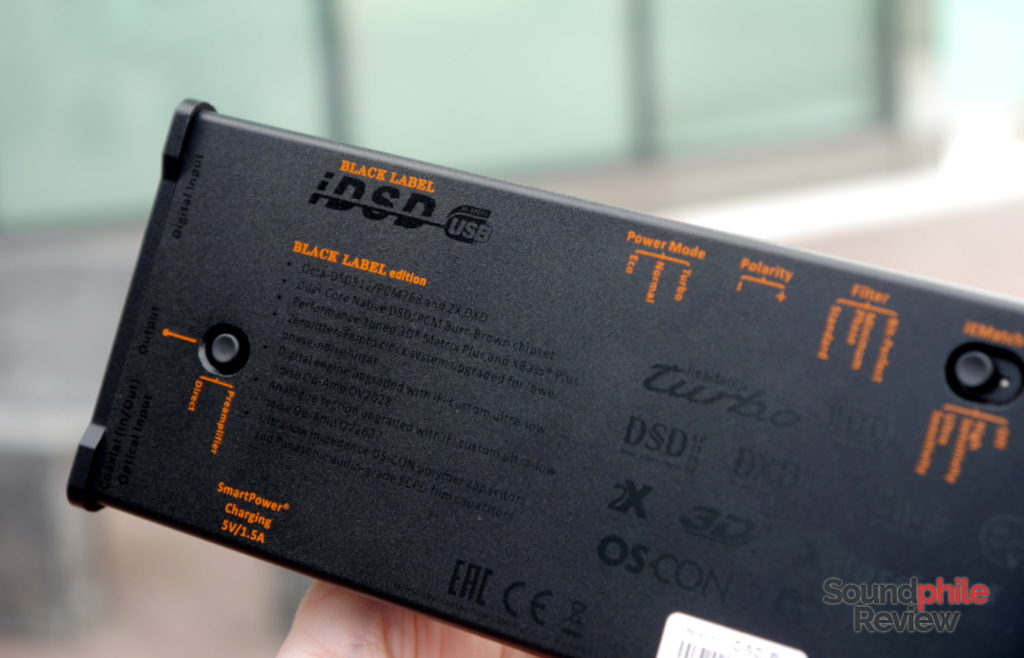
The lack of a front-facing status LED was a problem to me – I always forgot to power off the unit! The lack of a visual reminder is in fact a small flaw, but since the unit goes to sleep by default after a certain amount of time (as further explained below) there should not be any damage resulting from long-term exposure to this.
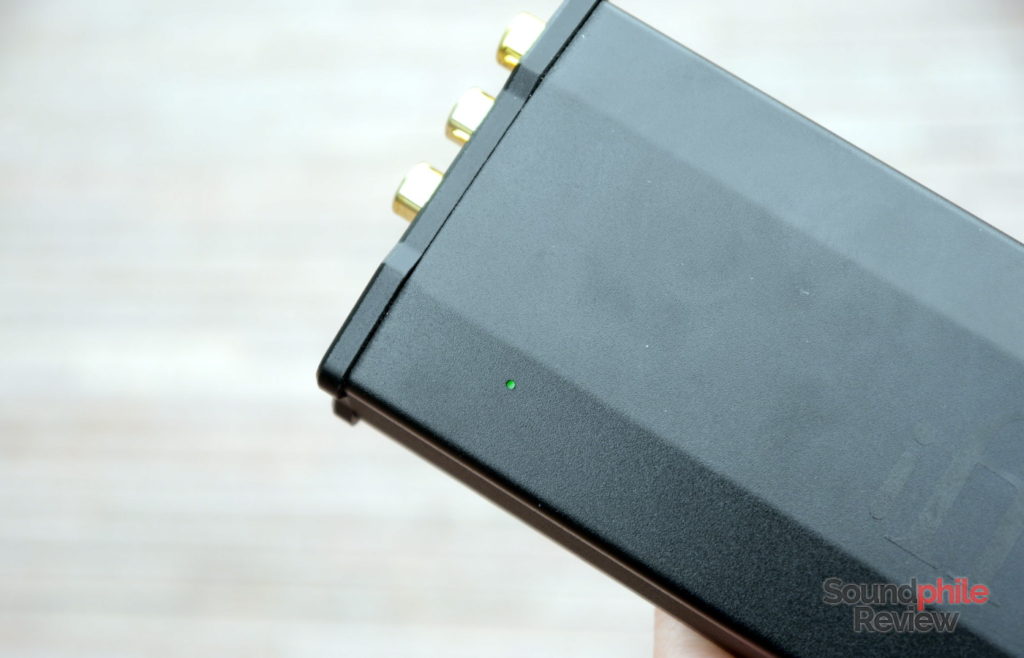
The volume knob is adjusted easily and offers the right amount of resistance, thus allowing precise adjustment of volume; it is correctly placed and feels solid, despite its small size. Its imbalance zone runs up to 9:30, which seems quite good given the starting point is at 7:00. Below 9:00, though, sound is just not there at all – the device is completely silent.
Features & Specs
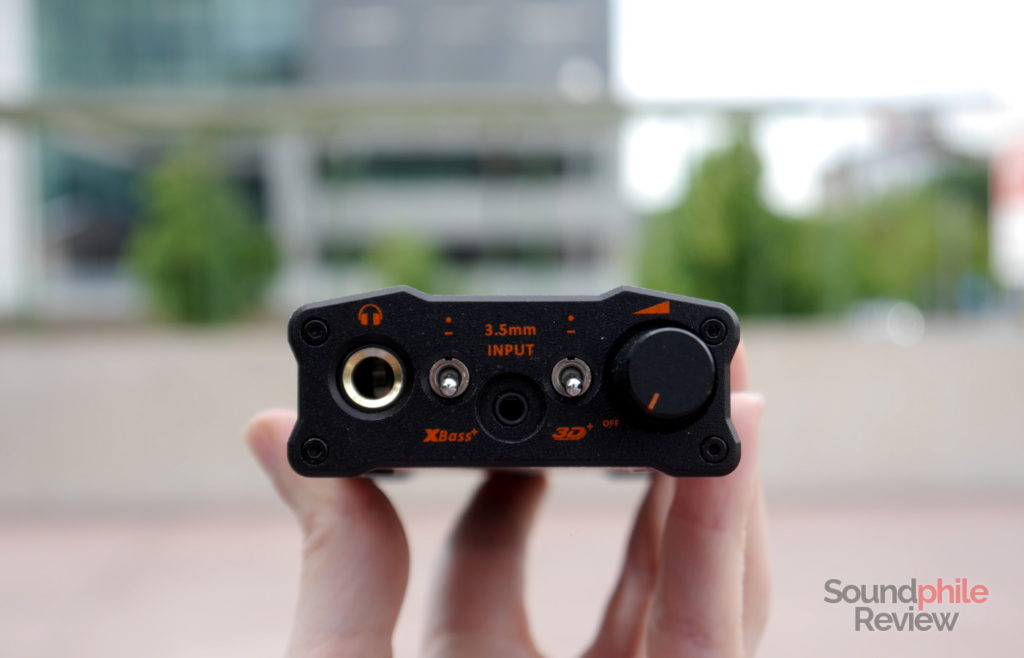
Not only can the micro iDSD Black Label drive headphones, it can also drive powered speakers and other amplifiers through the RCA output on the back. It can work in line-out mode and preamplifier mode: the first seems to be most useful in case you use another amplifier, while the latter allows you to adjust the volume of the output and therefore comes as especially convenient when using powered speakers or other equipment where full line-out volume is too loud. When in line-out mode the micro iDSD Black Label silences the RCA output when a headphone is plugged in, but it reproduces sound on both headphones and RCA outputs when in preamplifier mode.
The micro iDSD Black Label also features a 3.5 mm jack input that allows one to use it as a headphones amplifier or preamplifier only, thus making it more flexible than its nano counterpart.
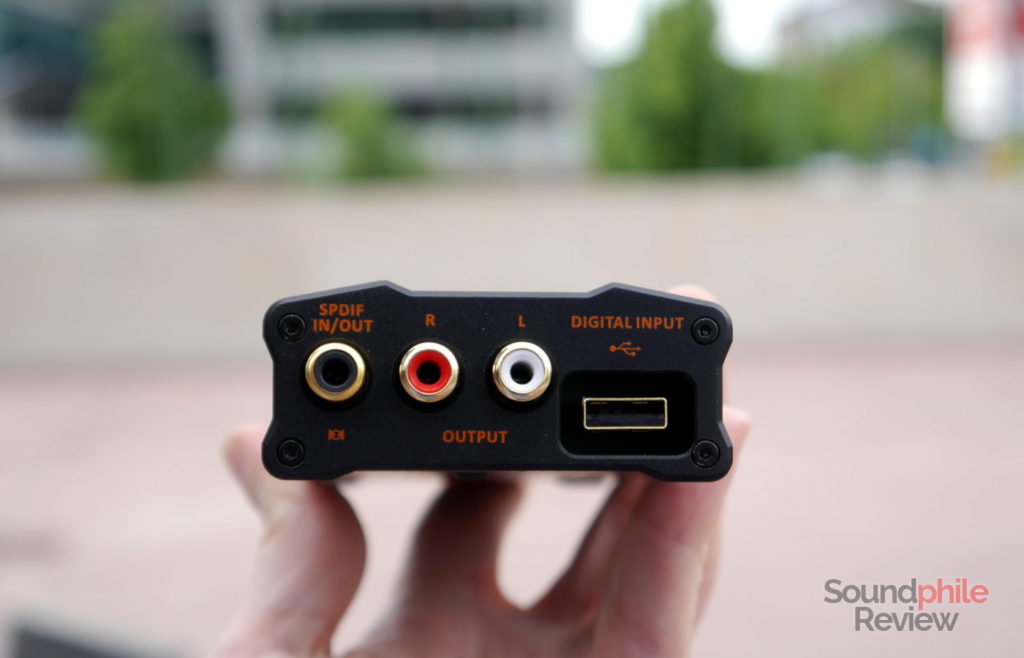
It can be connected to a PC using the onboard USB connector (a full-size male USB connector!), but there is also a SPDIF in/out port to connect the micro iDSD Black Label to other sources. It is therefore rather flexible and can be used in a variety of situations, from the desktop amplifier paired up with a PC to the DAC for a CD player in the living room and so on.
It is possible to take advantage of the iFi IEMatch technology just by using a switch on the lower side. Just like the dongle, it can be set to two different levels when engaged: “high sensitivity” and “ultra sensitivity”, with the latter being recommended (almost mandatory to me…) for headphones below 32 Ω impedance and with sensitivity higher than 95 dB.
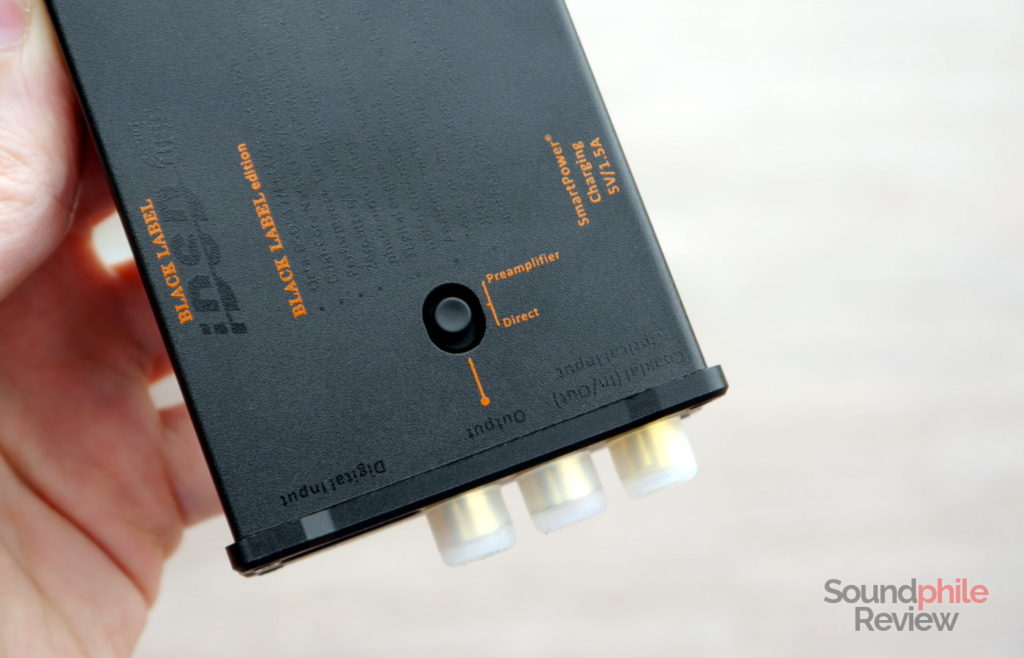
iFi chose to make the device sleep after three minutes of inactivity. They say they chose this in order to allow for the device to have a long battery life and to charge while inactive (up to 80%), as the micro iDSD Black Label is first and foremost a portable device. I do not agree with these decisions because of two points:
- if this is a portable device and is used with a portable source (e.g. a notebook, a smartphone or a DAP), making it sleep and start charging won’t help with those devices’ battery lives, so you could end up having a charged DAC and an empty battery on the source;
- there is no protection circuit, so when the micro iDSD sleeps and wakes up you can hear a loud “pop” sound on your headphones or speakers (if you connect them to the RCA outs on the back), which is definitely not ideal.
iFi thought of these possible vulnerabilities (which I deem “possible” as each has their own, different needs) and published a “no sleep” firmware, but then did not update it further. So you can choose between the 5.2B firmware with “no sleep” enabled, or the latest 5.3 firmware (which offers MQA compatibility) which does not offer the “no sleep” feature.
Another issue is the fact that the iFi micro iDSD Black Label only starts playing music after a gap of roughly one second. They say this can be countered using plugins for software like foobar2000 or JRiver, but this is straight up a flaw in the device. People like to use different software, different platforms and different devices altogether (how can you set up a one-second pause on a DAP or smartphone? What about Internet content?), and they can’t fix this issue easily. It is especially annoying when pausing or switching from one application to another, as you always lose the first second of playback.
iFi micro iDSD Black Label |
| Input range | 16 – 32 bit / 44.1 – 384 kHz PCM, 352 – 768 kHz DXD, DSD64, DSD128, DSD256, DSD512, 88.2/96/176.4/192kHz MQA |
| Suitable headphones impedance | 16 – 600 Ω |
| Output impedance | < 1 Ω (without IEMatch) |
| Maximum output power | 500 mW (8 Ω, Eco mode) 1,900 mW (16 Ω, Normal mode) 4,000 mW (16 Ω, Turbo mode) 166 mW (600 Ω, Turbo mode) |
| Frequency response | N.D. |
| THD+N (@1 kHz) | < 0.008% |
| SNR | 115 dB |
| Crosstalk | 79 dB |
At the heart of the device lie two Burr-Brown DACs (or a single dual-core DAC, as iFi puts it); contrary to the nano iDSD Black Label, though, it seems like there is just one amplifier that takes care of both channels, thus dropping the dual-mono setup. iFi states that the DACs were designed by Burr-Brown before the company was taken over by Texas Instruments and they sound “subjectively” better because of their purported better musicality. Despite all this, there’s no mention of which DACs are used.
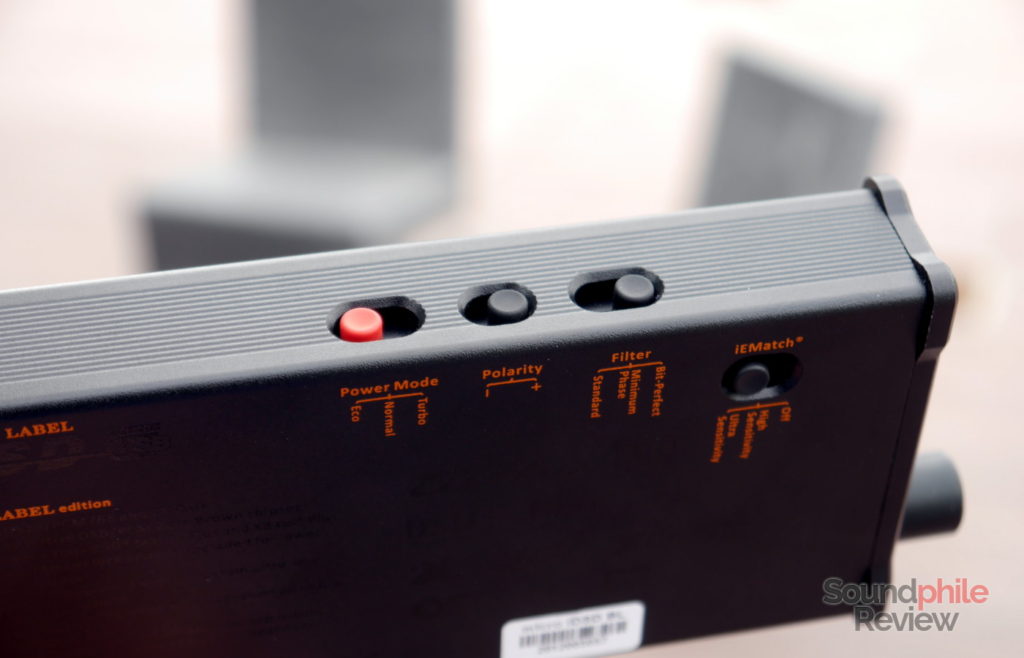
The power output is a monstrous 4 W peak at 16 Ω, and 1,560 mW continuous at 64 Ω – it is quite impressive given the portable nature of the device. It is possible to select the power output mode thanks to a switch: as headphones tend to have differences in impedance and sensitivity, the ability to curb the output is a welcome one for the most sensitive ones. So it is possible to select between “Eco” (up to 250 mW at 16 Ω), “Normal” (950 mW at 32 Ω) and “Turbo” (1,560 mW at 64 Ω). This ensures one can use any headphone they have from 16 Ω IEMs up to 600 Ω full-size headphones.
There is a switch to select polarity, but I can’t really understand what it’s for. It is related to sound polarity, but why would one want to revert it since there is no balanced connection involved? I can’t hear any significant difference in sound when toggling the switch. Maybe I’m missing some crucial information here, as I can’t wrap my head around it.
Battery Life
iFi does not disclose the details around the battery, but it has definitely got the thing right: battery life is extended whatever headphones you choose to use. Unless you use extremely power-hungry headphones, the micro iDSD Black Label can last for a full day, so there won’t be any worry about running out of juice.
A female USB port on the right side makes it possible to use the micro iDSD Black Label as a (very expensive) power bank, so that one can take advantage of the internal battery’s charge to power other devices such as a smartphone.
Sound
I used a few different products to test the iFi micro iDSD Black Label with: namely the HiFiMAN HE-560, the Sennheiser HD 6XX, the Meze 99 Classics, the IMR Acoustics R1, the RHA T20i, the KZ ZS6, the KZ ZSR, the KZ ZS10, the Venture Electronics Monk Lite 120 ohm and the Venture Electronics Asura 2.0s, plus a whole other host of headphones. USB source was my PC, where (mostly standard-res) FLAC files were played.
The background is pitch black despite all the issues I have with power noise – there’s just nothing, even when other devices hiss. Devices such as the iFi AC iPurifier are not necessary in this case.
When effects are not engaged, the sound signature sounds completely transparent to me – which is completely good, as I can concentrate on music and headphones instead of the source. As is often the case with neutral sources, I cannot really tell the difference in tonality between the micro iDSD Black Label and other devices. If differences are there, then they are so little I can’t reliably and repeatedly hear them.
In terms of detail display and soundstage, the iFi micro iDSD Black Label is exceptional and shows a great attention to the technical side – there are lots of micro-details and the soundstage is wide and deep.
The 3D+ effect makes the soundstage much wider – and it does so, to my amazement, with perfect execution and a resulting naturalness that is almost incredible. The only downside to this feature is the shift to higher frequencies, so everything sounds brighter and there’s a small loss of presence in the mid-bass region. It’s a trade-off I am personally happy with, given how effective the result is!
The XBass+ effect, on the other hand, boosts the lows and gives the sound more thump and punch. There is more bass as well as sub-bass, which is especially welcome when using headphones with poor bass presence – or if you just fancy a bit of added lows. The execution is, once again, almost flawless: this is not a “turn bass to 11” switch; instead, it is a smart equalisation that adds fun without taking out fidelity – there’s a boost in the mid-lows and a very slight emphasis on lower bass that only add body but don’t result in a “Beats sound” with overwhelming lows, unless you are already using bass-focused headphones.
Both effects sit somewhat in the middle of the two presets on the micro iCAN SE: the XBass+ effect offers a significant boost to bass that is more than the first preset, while the 3D+ makes the sound larger but does not reach the same extent of the iCAN SE.
There is also an additional switch on the side which selects the filter: there three of them (“bit-perfect”, “minimum phase” and “standard”), but I can’t tell the difference between them – it’s practically inaudible. I guess there might be a difference using ultra-sensitive multi-balanced-armature in-ear headphones, but that’s not something I have had the opportunity to test so it’s more of a speculation than anything.
Final Thoughts
The iFi micro iDSD Black Label is surely expensive: at £599 it is thrice the price of the nano version and even more than full-featured desktop devices. But this high price affords you a complete device that is a bit of a Swiss army knife – it’s got lots of features and is extremely capable in everything it does. Plus, it is portable and some things are pretty incredible for a device this little, such as the power output.
Given its multiple qualities, the iFi micro iDSD Black Label stands out in the crowd of devices. It has a couple flaws, among which one can be solved thanks to a special firmware release; the other one, the one-second pause at the beginning of playback, is instead much more annoying and not easily fixable. If the latter was not there, this could easily be the ultimate portable device.
The iFi micro iDSD Black Label has a retail price of £599/$599/€599.

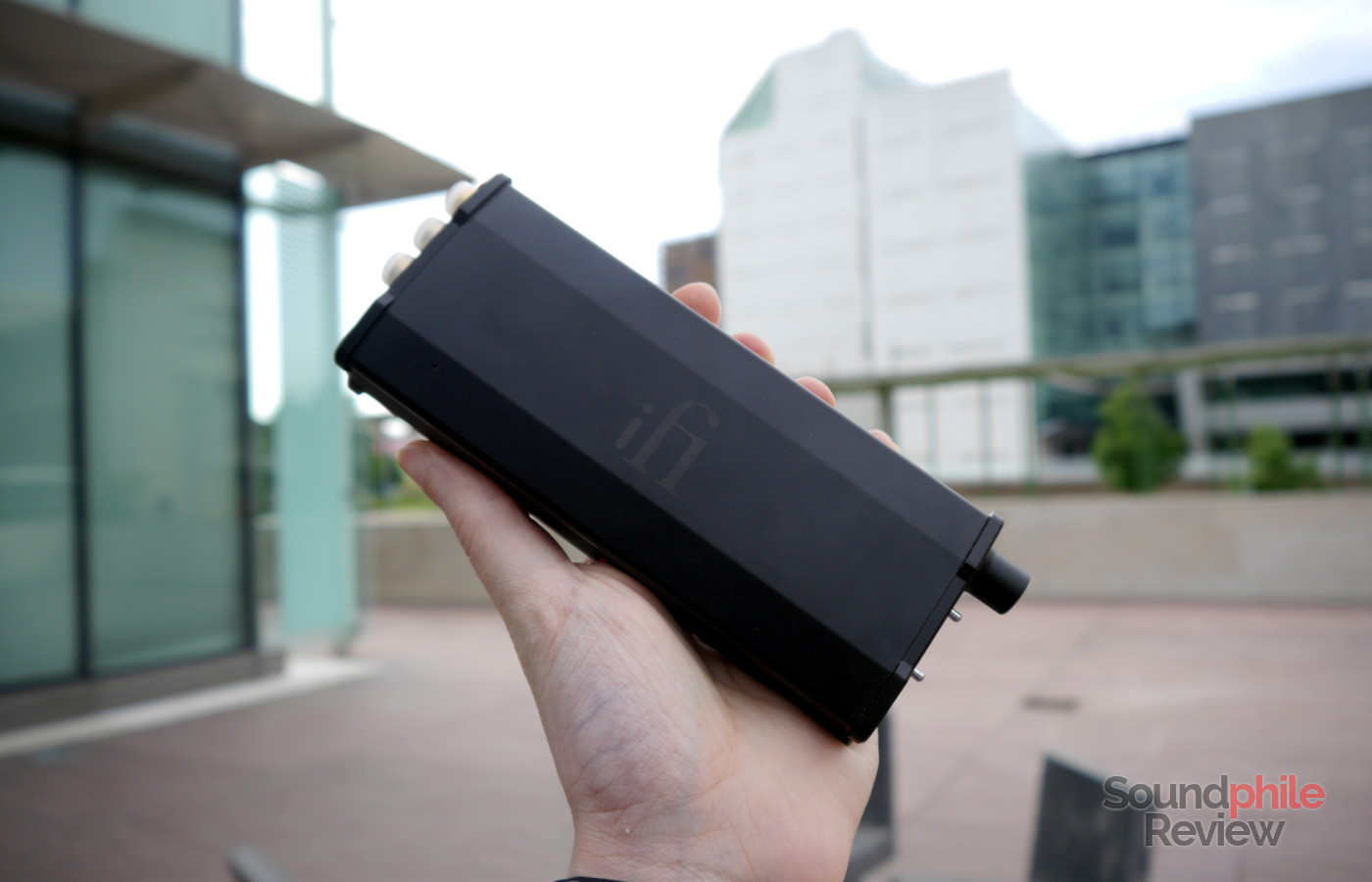


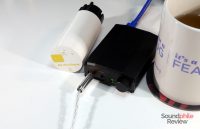
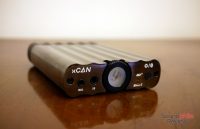
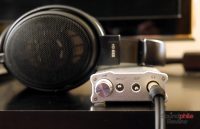


I am trying to get this important characteristic everywhere… But you all do not make mention of it…
Does the device support singled – ended headphones And balanced headphones like the idsd nano does? Thanks
Hi Steven,
As a rule of thumb, if it is not mentioned anywhere, probably that’s because the feature is not there.
There are no balanced 6.3 mm jacks used for headphones, as far as I know, so the micro iDSD BL does not support balanced headphones like the nano version does (it uses 3.5 mm jacks).
Thanks for the review 🙂
Tis a shame with the 1 second gap issue, but I’m sure it’s something one can live with.
The one second delay in playback has been resolved in firmware updates. This delay was related to changing digital decoding rates. Great review.